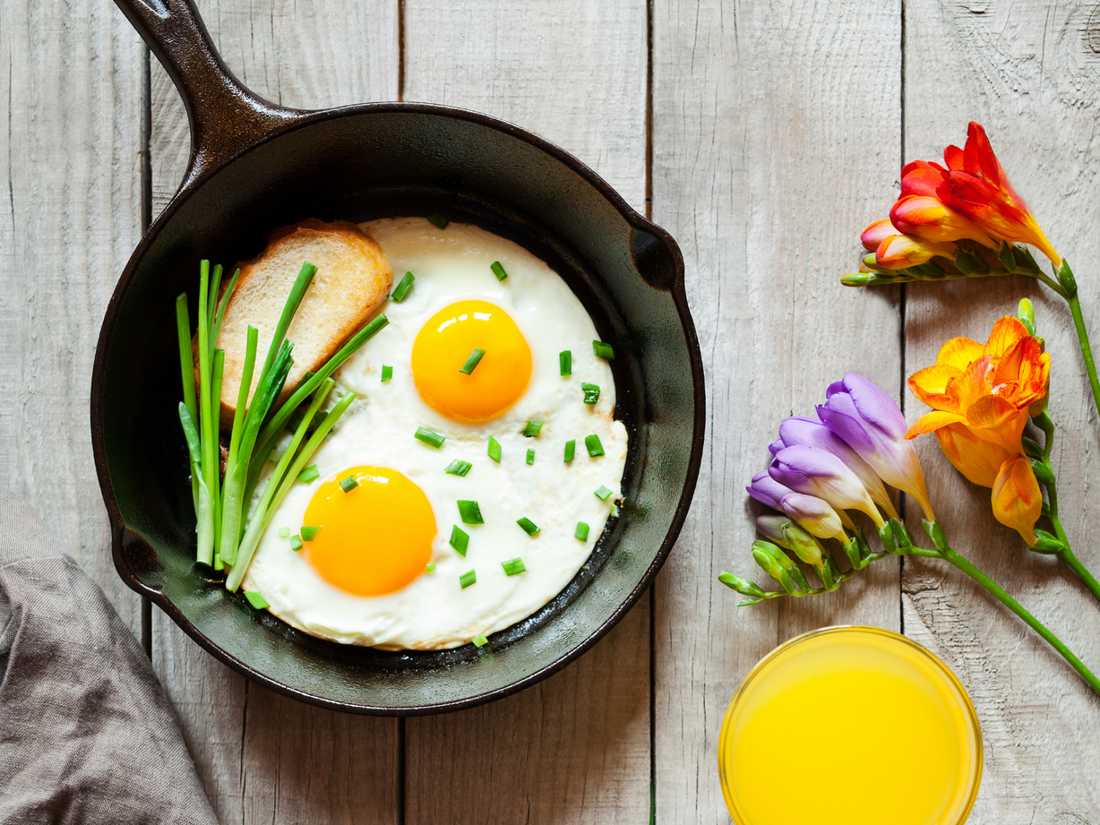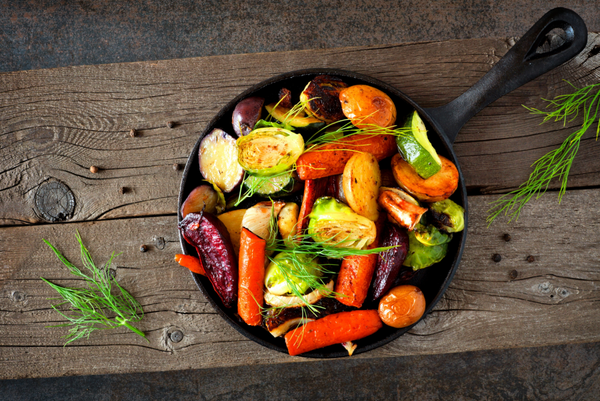
Cooking With Cast Iron Made Simple
Share
You cook at home and care about the ingredients you consume, but have you ever given much thought to the cookware you’re cooking in?

Many pots and pans of choice by the home chef are most commonly PTFE-coated "non-stick" which is also sometimes referred to as Teflon cookware. It can be easy to understand why they’re favorites when they can make clean up such a breeze. But at what cost?
When you’re talking dollars and sense, Teflon pans often come in pretty affordable options. If you’re talking about the cost on your health though—it may be rather pricey.
The Sticky Side Of Non-Stick
The super chemicals used in PTFE coatings are practically indestructible when it comes to bacteria, strong acids, and even UV light. They are likely carcinogens that may come with endocrine disrupting chemicals that could lead to liver damage, cancer, and developmental problems.
Simply put, many non-stick cookware options may come with some pretty concerning health hazards when used on a regular basis.
With more and more awareness spreading on the dangers of heating up PTFE when cooking, great alternatives to non-stick pans are becoming easier to find. Some of these include:
- Stoneware
- Lead Free Glazed Ceramic
- Heatproof Glass
- Stainless Steel
- Cast Iron
Let’s Talk Cast Iron
One of our personal favorites for cooking is the good old classic cast iron skillet! It’s rugged, easy to clean, holds heat really well, and when properly seasoned is a naturally non-stick option!
Not the experience you’ve run into?
A lot of cast iron cookware comes pre-seasoned and ready to use. If yours is not—or you found a neglected, underappreciated gem at a yard sale—simply scrub the skillet under running water with a not-too-abrasive scrubby (no soap!), rinse, and dry with a paper towel. Then use a high smoke point cooking oil to rub into the pan using your paper towel.
To allow the seasoning process to really set, lay a piece of aluminum foil on the bottom rack of your oven. Then bake your pan upside down on the top oven rack for 1 hour at 350 degrees. Allow to cool.
It’s as simple as scrub, rinse, dry, oil, bake.

Whenever you're applying oil to the skillet when it is at a high temperature—say pre-bake, oil, bake—the oil becomes a natural polymer (or has a stronger molecular bond) which can even more effectively “season” the skillet. This is basic cast iron maintenance contributing to the desired non-stick goal.
Cast iron cookware works great on all stovetop surfaces. Yes, this really does mean gas, electric, induction, in the oven, or even on a grill! Plus, it’s rugged to take camping as cast iron performs flawlessly over a campfire when you’re cooking up a tasty dish in the great outdoors.

Cleaning Cast Iron
How to clean cast iron cookware is a common query. It’s pretty much like the “seasoning steps” we just went through above. The way to keep your skillet looking beautiful and maintaining that naturally non-stick, seasoned surface is really simple.
After use, just pour a little high smoke point cooking oil in and rub the skillet clean using a paper towel, wiping, and picking out any food pieces there may be.
Another option that works well, especially if food is tougher to get off, is to simply use salt in the skillet. Scrub around with a paper towel or dishcloth (that you don’t mind staining), and pick out any food pieces. Finish up by rubbing in some oil.
Things to remember with cast iron cookware is that while it can be “soaked” for a short while to loosen up anything stuck on the surface, you don’t want to soak it for very long periods of time as this can create rust. Whenever you’re done using water on cast iron, you want to be sure to always dry it off as soon as possible to avoid rusting.
More Nutrition From Your Skillet Of Choice
When you care about cooking at home and already use wholesome, clean food ingredients in the meals you make, you’ll probably be glad to know you can also gain another vital mineral just by choosing the right pan—iron!
Iron deficiency can leave you feeling fatigued and looking rather pale. It can limit your physical work capacity, reduce and impair your mood and cognitive functions, and put pregnancy at risk. Lack of iron can also cause headaches, anxiety, dizziness, restless leg syndrome, and it can lead to anemia.

A diet focused on iron rich foods can often be very helpful in natural efforts to remedy these conditions. Cooking meals in a cast iron skillet can also be a fantastic source of iron!
So whether you’re new to cast iron cooking or very “seasoned” in this kitchen classic—let us know what healthy dishes you’re cooking up and tag us with your favorite skillet made recipes.

6 comments
I was given some cast iron pans years ago but never use them as much as I should because food sticks to them and they rust when I store them. Now I understand why. Thanks – I think I’ll be getting them out to season and treat right.